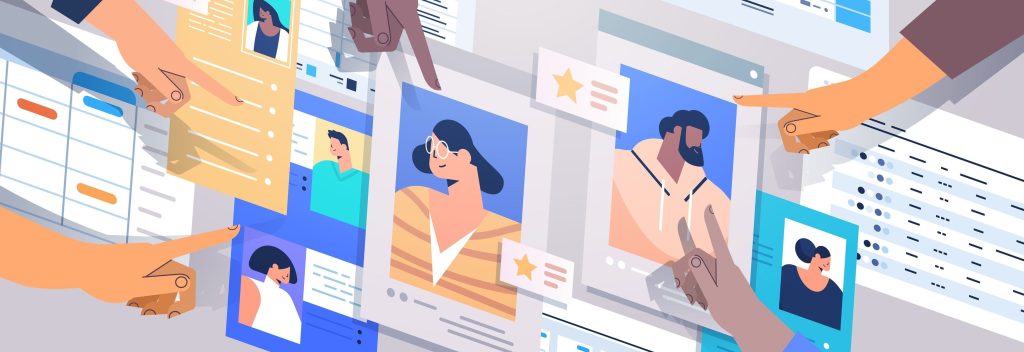- Have any questions?
- 888-432-8878
- steve@sebackground.com
Biden Mandates Federal Agencies to Create ‘Equity Teams’
March 3, 2023
Celebrating National Holidays: Fun and Creative Ways to Recognize Employee Diversity
March 5, 2023Human Resources (HR) departments have evolved significantly over the past few years. The introduction of HR technology has revolutionized the way HR departments operate. HR tech has allowed HR teams to streamline their processes, automate tedious tasks, and focus on more strategic initiatives.
To this effect, it’s important for HR managers to determine and focus on the technology trends that play a role in HR operations. This way, they can get a grip on what lies ahead of them and also focus on what really matters in their respective organizations.
In this blog post, we will discuss some of the HR technology trends that are currently shaping the industry, including how AI and HR can work together. We will explore how these technologies can be leveraged to streamline HR operations and improve overall efficiency.

Some HR Tech Trends to Look Out For
HR automation requires a lot of processes that can sometimes be too much to handle. This is why tech trends like AI and HR, data analytics for HR are more important now than ever before. Let’s review a few of the trends:
1. Artificial Intelligence (AI) and Machine Learning (ML)
Artificial intelligence and machine learning are two of the most significant trends in HR technology. AI and ML technologies can help HR teams automate many repetitive tasks, such as resume screening, scheduling interviews, and even candidate pre-screening. AI and HR can work together to identify potential candidates that fit certain job descriptions, match candidate profiles to job requirements, and even analyze the behavior of existing employees to determine areas for improvement.
AI and ML technologies can also help HR teams identify patterns in employee behavior, such as attendance patterns, and alert HR managers to potential issues. This can help managers take proactive measures to address potential problems before they become major issues.
2. Employee Engagement Tools
Employee engagement is a crucial aspect of any organization. Engaged employees are more productive, have higher job satisfaction, and are more likely to stay with their current employer. HR technology can help organizations increase employee engagement through the use of various tools such as data analytics for HR, pulse surveys, performance feedback, recognition tools, and employee development tools.
Pulse surveys are quick surveys that can be sent out to employees to get real-time feedback on specific issues or topics. Performance feedback tools can help managers provide regular feedback to employees, ensuring that they are aware of their progress and areas for improvement. Recognition tools can help managers recognize and reward employees for their hard work and achievements, and employee development tools can help employees develop new skills and competencies.
3. Virtual and Augmented Reality
Virtual and augmented reality are technologies that can be used to improve the training and development of employees. These technologies can create realistic simulations of real-world scenarios, allowing employees to practice and improve their skills in a safe and controlled environment. They make a great option for assisting HR automation.
Virtual and augmented reality can also be used to create immersive experiences that help employees learn and retain information more effectively. For example, virtual reality can be used to create a simulated tour of a company’s facilities, giving employees a more realistic understanding of the organization’s operations.
4. Cloud-based HR Systems
Cloud-based HR systems are becoming increasingly popular due to their flexibility and scalability. Cloud-based systems allow HR teams to access data from anywhere, making it easier to manage remote teams and ensure that all HR automation data is up-to-date and accurate.
Cloud-based HR systems can also be customized to fit the specific needs of an organization. This allows organizations to choose the features and functionalities that best meet their requirements without having to invest in expensive on-premise systems.
5. Mobile HR Applications
Mobile HR applications are becoming increasingly popular as more employees work remotely or from different locations. Mobile applications can help employees stay connected with their HR teams, access HR data, and complete HR-related tasks, such as submitting expense reports or requesting time off.
Mobile HR applications can also help HR teams manage remote teams more effectively. For example, managers can use mobile applications to check in with their team members, provide feedback, and ensure that everyone is on track to meet their goals.
Conclusion
HR technology has become an essential tool for organizations looking to streamline their HR operations and improve overall efficiency. By leveraging these technologies, such as AI and HR, organizations can create a more efficient, engaged, and productive workforce. Organizations that invest in HR technology will be better positioned to attract and retain top talent and improve employee engagement.
The post HR Technology Trends: Leveraging Technology to Streamline HR Operations appeared first on The HR Digest.
Source: New feed




